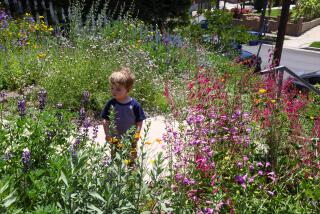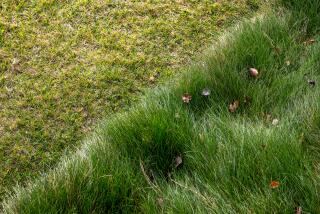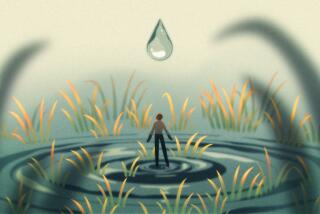GARDENING : Kinder Strategies to Improve Lawn’s Appearance
- Share via
If you have been using chemicals or synthetic chemicals to improve the appearance of your lawn, you are missing alternative strategies that not only help you reach your goal, but are a little kinder to the environment, too.
One problem with chemical pesticides and herbicides is that they offer only a temporary solution.
Over the long term, weeds, diseases and insects still enjoy the upper hand. For example: If you apply a selective crabgrass herbicide, with luck, you’ll kill the current stand of crabgrass. The problem is that thousands of crabgrass seeds lay ready to start the cycle anew. A similar conundrum exists with insects. Insects are best controlled by other insects. This has been the case for millions of years. But when we kill the nuisance bugs, we also kill their natural enemies. And a new batch soon drifts over from your neighbor’s lawn.
Another problem is that many of us have never figured out exactly which chemicals to use, or how and when to apply them effectively.
We might apply a pesticide for the grubs we find in June, for example, not knowing that grubs don’t feed until about the third week in July. In that case, all we end up killing are beneficial insects and birds, which would probably have kept the grubs in check anyway.
Here’s the most important thing to know about lawns: If you were to establish a hardy, disease- and drought-resistant grass variety, many of your current lawn problems would go away. In fact, often the best way to reduce water and chemical usage is to till up that beloved, old-generation bluegrass.
The problem is that traditional bluegrass has a very shallow root structure, with nearly all of its roots within five inches of the surface. When surface moisture is depleted quickly, the grass becomes distressed and susceptible to disease. The more constant subsoil moisture that rests only a few inches farther down remains out of reach.
Lacking sufficient moisture, traditional bluegrass will also revert to its thinned-out conservation mode, which is an open invitation to deep-rooted weeds to fill the gaps. Add to the mix the fact that traditional bluegrass has little shade tolerance, becomes thatch-bound annually, is genetically vulnerable to several kinds of blight and a host of insects, and other grass varieties begin to have real appeal.
A hardier competitor is tall fescue, or K-31 fescue. Its roots are long enough to reach the more constant subsoil moisture. What this means to you is tremendous water savings. It is also genetically more resistant to fungal and bacterial leaf blight, and grubs find its roots much less appealing than bluegrass roots.
When well established, it can actually choke out some weeds, and as a clump grass, it won’t invade the neighbor’s yard or your flower garden. And finally, it won’t commit suicide with a dense layer of thatch.
If tall fescue--with its coarse leaves and rapid top growth--is not for you, then you might consider red fescue, or one of the new fine-blade, dwarf fescues.






